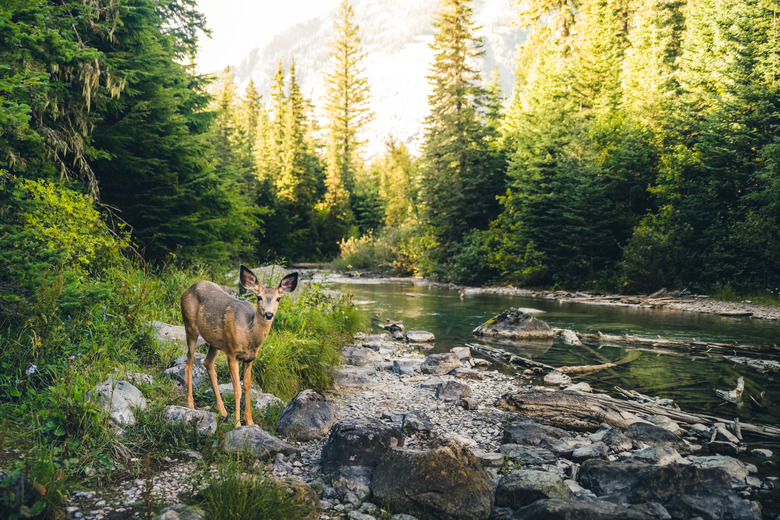What Are The Trophic Levels In Our Ecosystem?
Trophic levels are the feeding positions of all organisms in a specific ecosystem. You can think of them as food chain levels or as a trophic level pyramid. The first trophic level, or base, of an ecosystem has the highest energy concentration. This energy is dispersed among animals in the subsequent three or four levels. Certain organisms, because of their size, function or eating behavior, belong in a particular trophic level, though sometimes it's difficult to place animals with more complex behaviors.
TL;DR (Too Long; Didn't Read)
Trophic levels describe what organisms eat. There are five key trophic levels in an ecosystem, from simple plants that get energy from sunlight to apex predators at the top of the food chain.
Plants and Algae
Plants and Algae
Plants and algae comprise the lowest level of the trophic system. Called primary producers or autotrophs, plants and other organisms create their own food using photosynthesis. By using energy gleaned from the sun and nutrients gathered from the soil or water, plants and algae can manufacture food. Therefore, plants and algae are the primary producers of energy and don't need to consume food from other sources. They can be either terrestrial or aquatic.
Primary Consumers
Primary Consumers
Herbivores belong in the second level of the trophic system. Called primary consumers, herbivores eat only plants and algae as their sources of energy. Herbivores cannot manufacture their own food. Common herbivores include:
- most insects
- rabbits
- cows
- antelopes
- deer
- pigs
In an ocean ecosystem, animals such as zoo plankton or krill that consume algae belong to the second level. Primary consumers use the energy naturally created by plants to function.
Secondary Consumers
Secondary Consumers
A specialized type of carnivore belongs to the third level of the trophic system. Carnivores are organisms that prey on and eat other animals. Animals that consume only herbivores belong to Level 3 and are referred to as secondary consumers. This type of carnivore uses the energy the primary consumer gathered from the plants it ate. Animals such as foxes, which primarily eat rabbits, are as secondary consumers. Even animals such as fish, rats, spiders and ants can be secondary consumers.
Tertiary Consumers
Tertiary Consumers
The fourth trophic level includes carnivores and omnivores which eat the animals that belong to the third level. Omnivores are animals that eat both plants and animals. Omnivores consume both primary producers and secondary consumers. Animals on this level are called tertiary consumers. These animals tend to receive less energy from their food than animals in the third level. This is because the energy created by primary producers has been transferred and converted at least twice by animals in the previous groups. Each time you go up a trophic level, available energy is reduced by at least one magnitude.
Apex Predators
Apex Predators
The fifth trophic level is the final level in an ecosystem. It is composed of apex predators that prey on and eat the carnivores and herbivores in the fourth level. Apex predators are at the top of the food chain and have no predators of their own. They allow each different trophic level to sustain stable levels of animals. Lions, alligators, bears, anacondas, killer whales and hawks are common apex predators.
Cite This Article
MLA
King, Derek. "What Are The Trophic Levels In Our Ecosystem?" sciencing.com, https://www.sciencing.com/trophic-levels-ecosystem-8205653/. 22 November 2019.
APA
King, Derek. (2019, November 22). What Are The Trophic Levels In Our Ecosystem?. sciencing.com. Retrieved from https://www.sciencing.com/trophic-levels-ecosystem-8205653/
Chicago
King, Derek. What Are The Trophic Levels In Our Ecosystem? last modified March 24, 2022. https://www.sciencing.com/trophic-levels-ecosystem-8205653/
